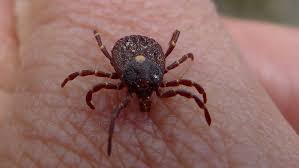Kyasanur Forest Disease : High Alert

The Chikkamagaluru District health officials are on high alert to prevent Kyasanur Forest Disease (KFD), also known as monkey fever, in the district.
- KFD, also referred to as Monkey Fever, is a tick-borne viral haemorrhagic disease mostly found in southern India.
- The disease was first reported from the Kyasanur Forest of Karnataka in India in 1957; hence, it is known as Kyasanur Forest disease (KFD).
- The causal agent, Kyasanur Forest Disease Virus (family Flaviviridae, genus Flavivirus), is a member of the tick-borne encephalitis (TBE) complex.
- It is transmitted by a range of tick species, with Haemophysalis spinigera being considered the principal vector.
- A wide range of small rodents, monkeys and birds are thought to play a role in KFD virus transmission.
- Transmission to humans may occur after a tick bite or contact with an infected animal, most importantly a sick or recently dead monkey.
- No person-to-person transmission has been established yet.
- The epidemic period usually begins in October or November and peaks from January to April, then declines by May and June.
- Symptoms: Sudden onset of high-grade fever, prostration, nausea, vomiting, diarrhea and occasionally neurological and haemorrhagic manifestations.
- Between 5 and 10% of people who are known to be affected by KFD die.
- There is no cure for KFD.
- Supportive care is crucial, including fluid balance, providing oxygen, managing blood pressure, and treating additional infections.
- Vaccine: A vaccine for KFD is available and recommended in the parts of India where KFD is found.




